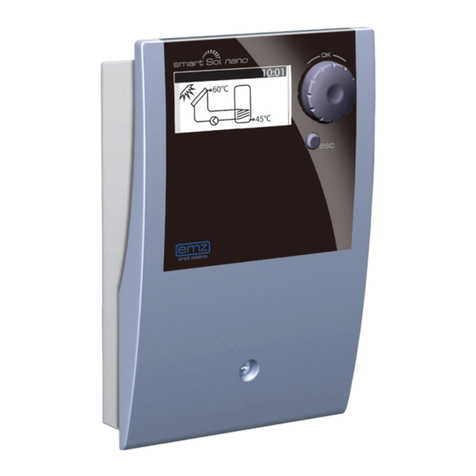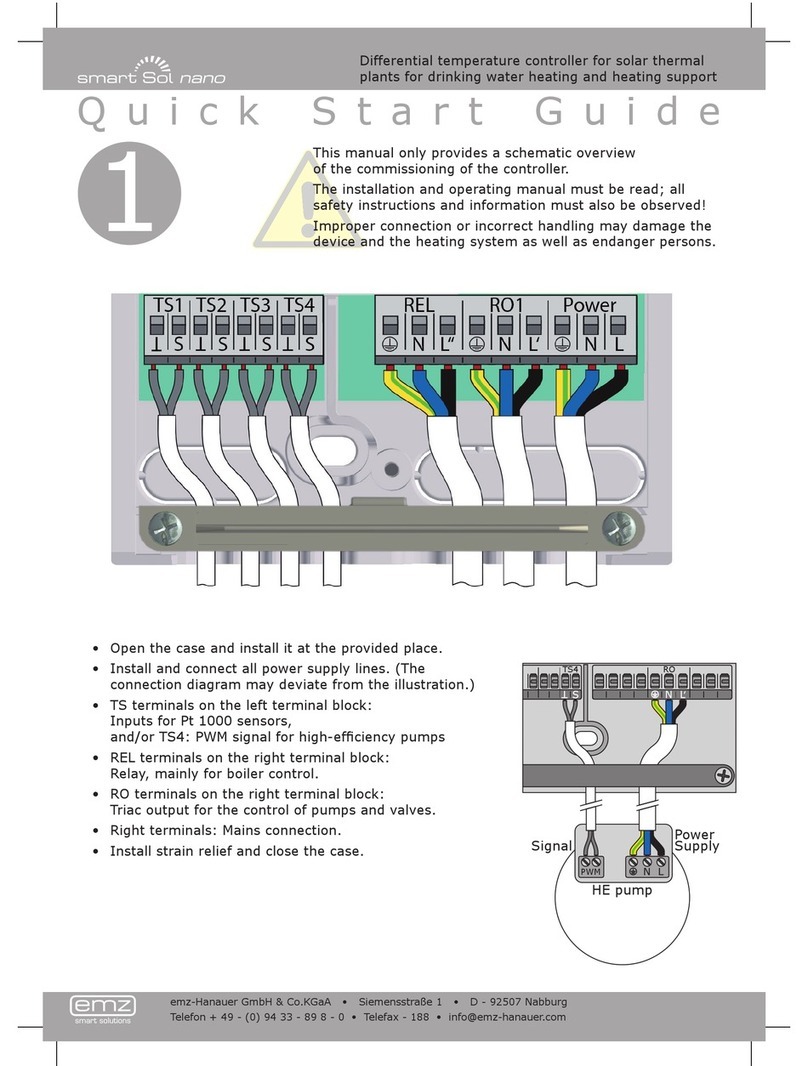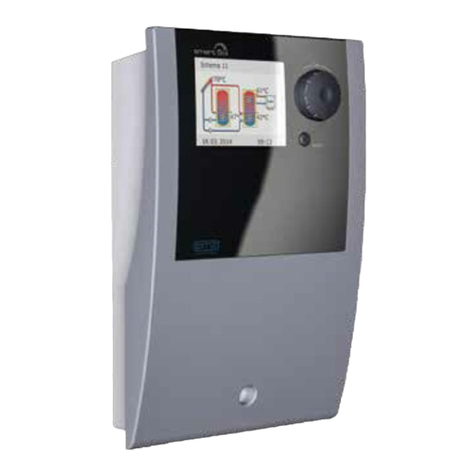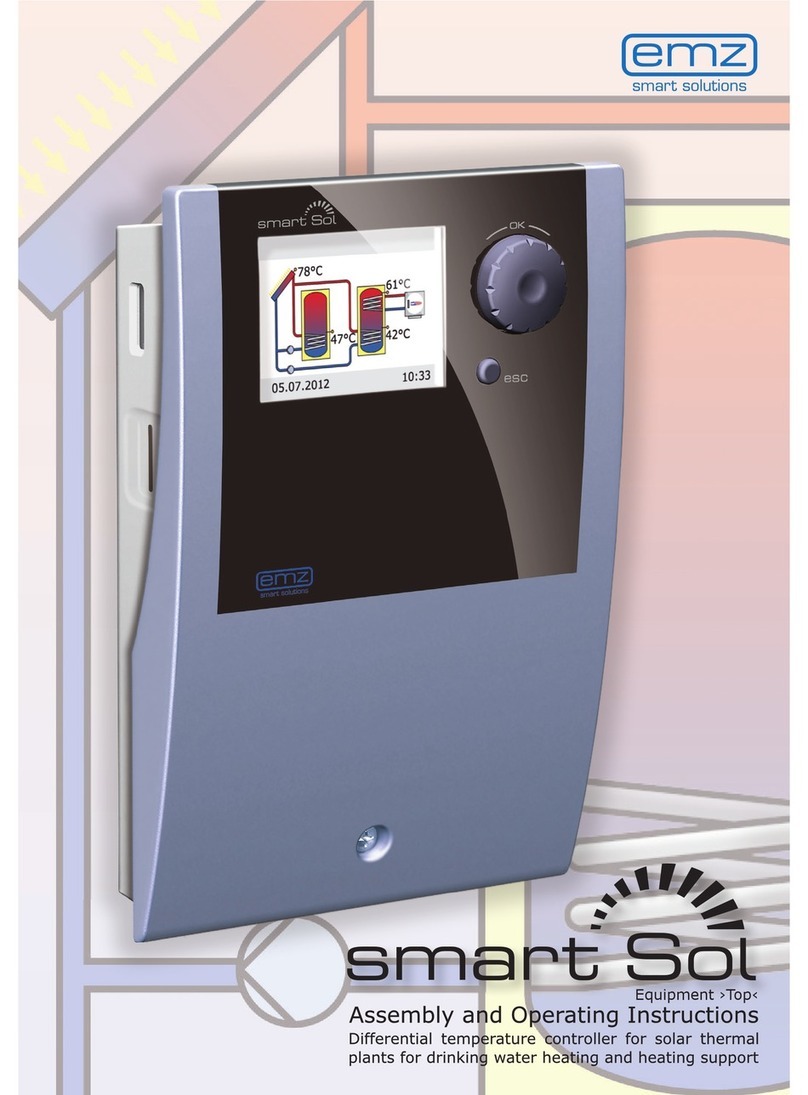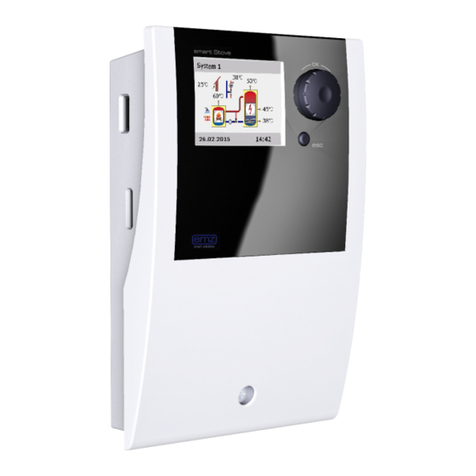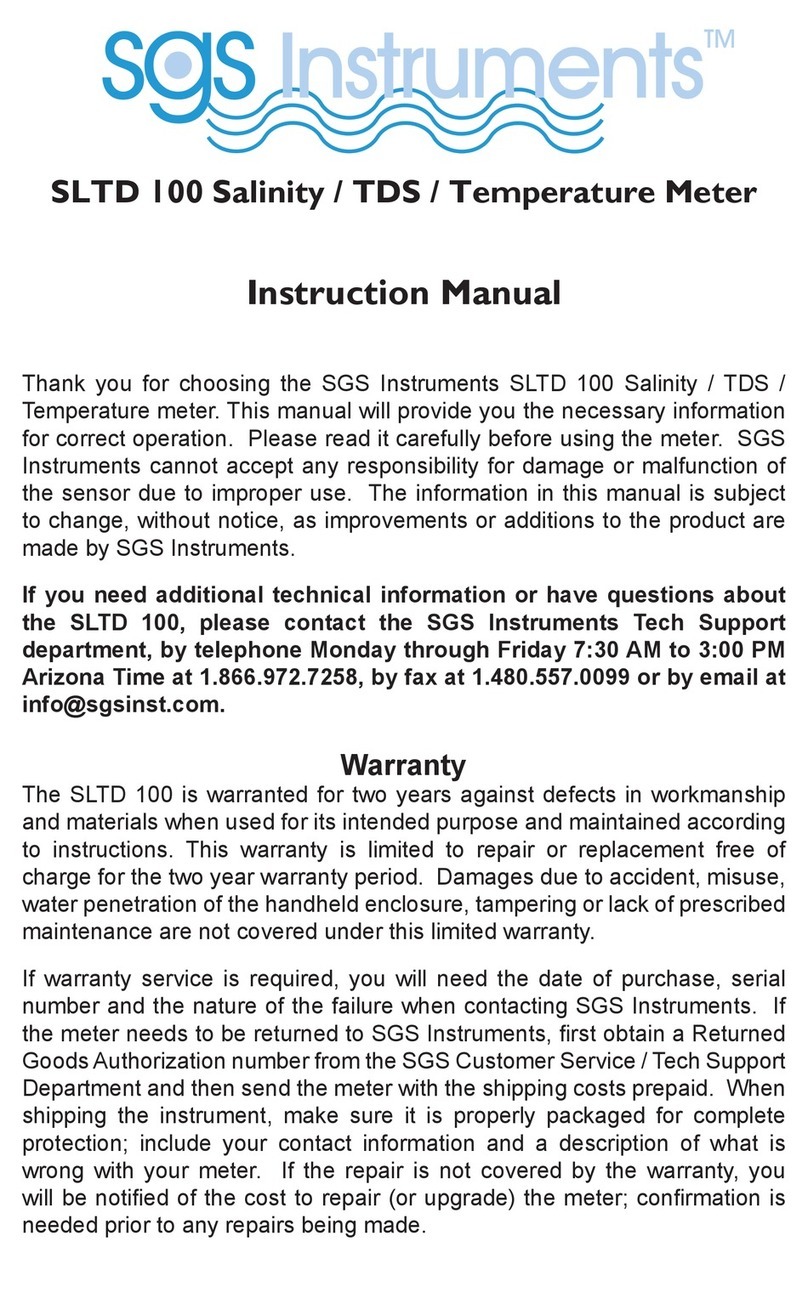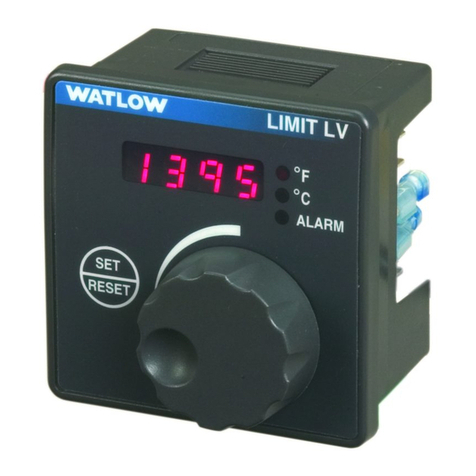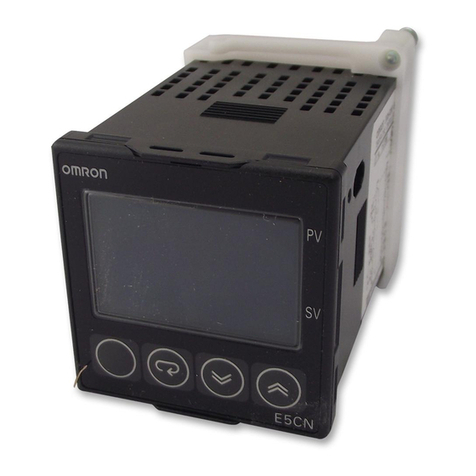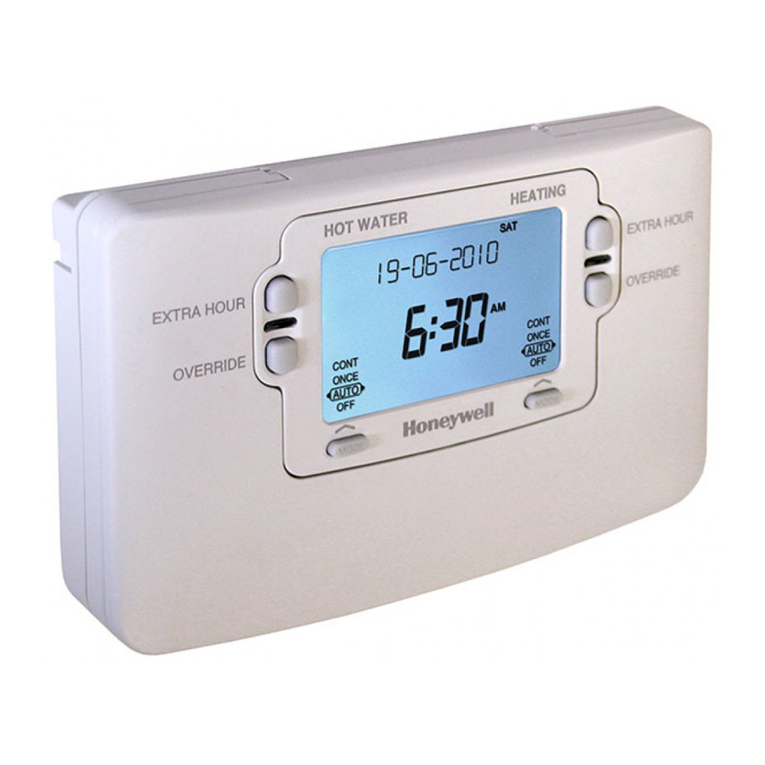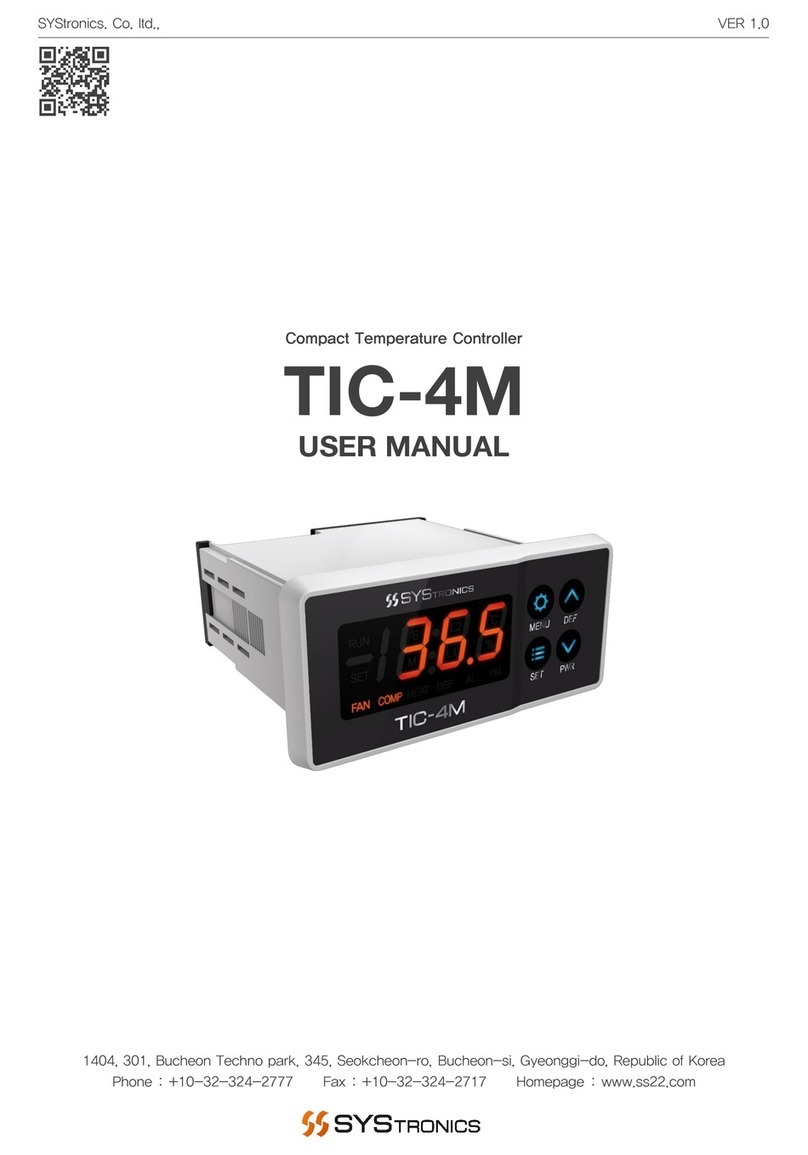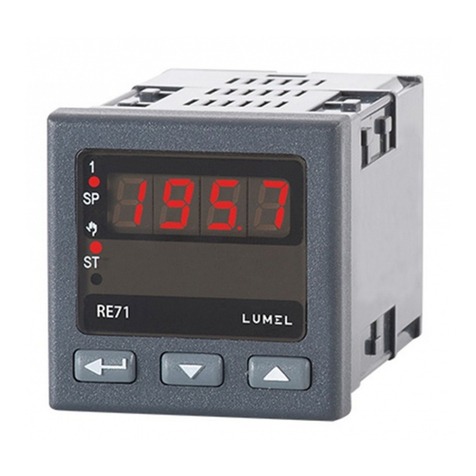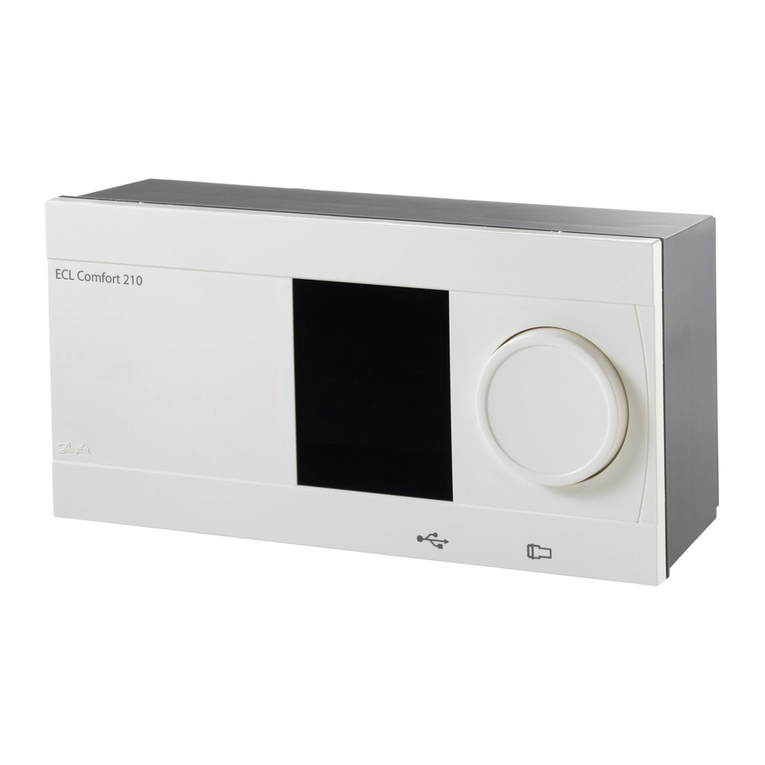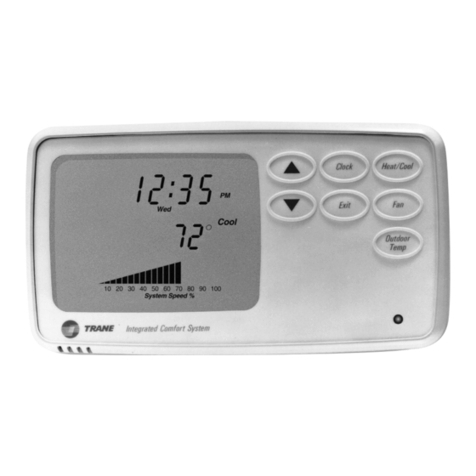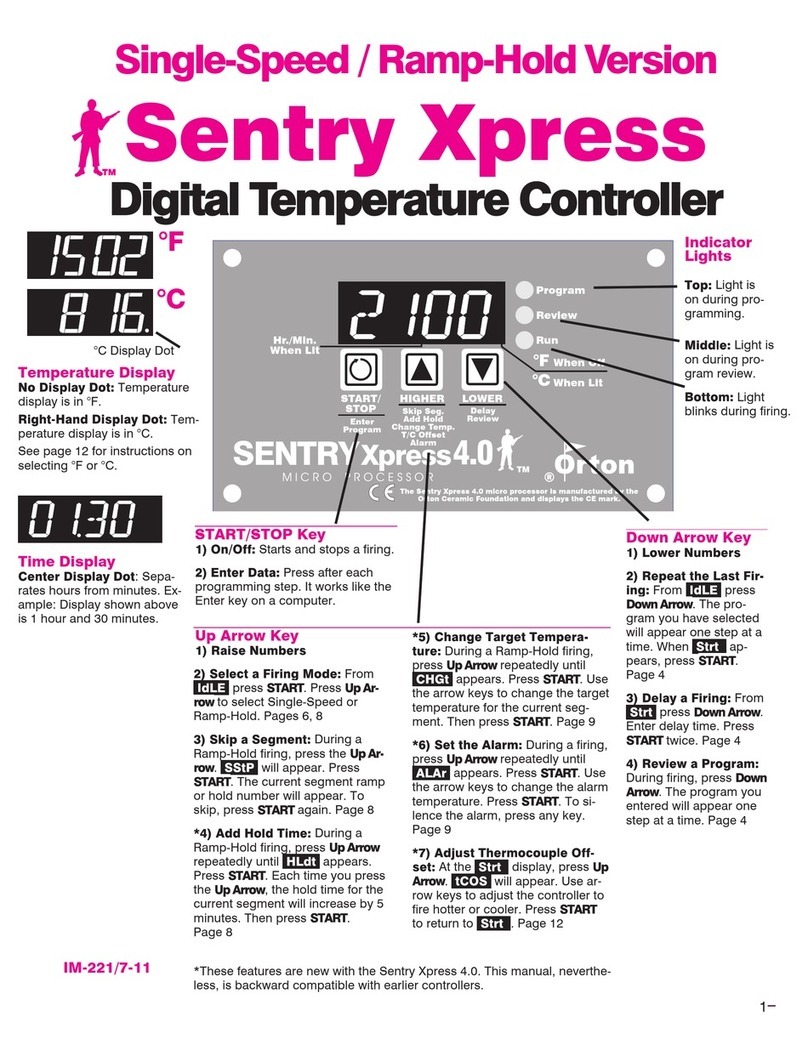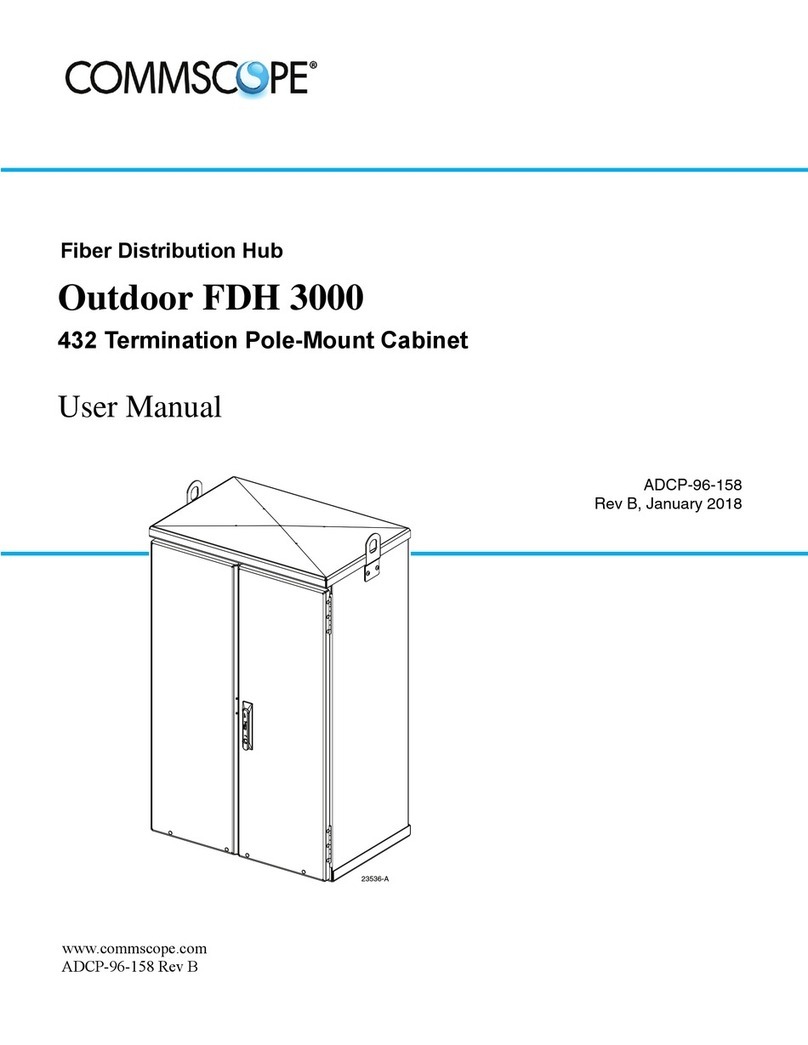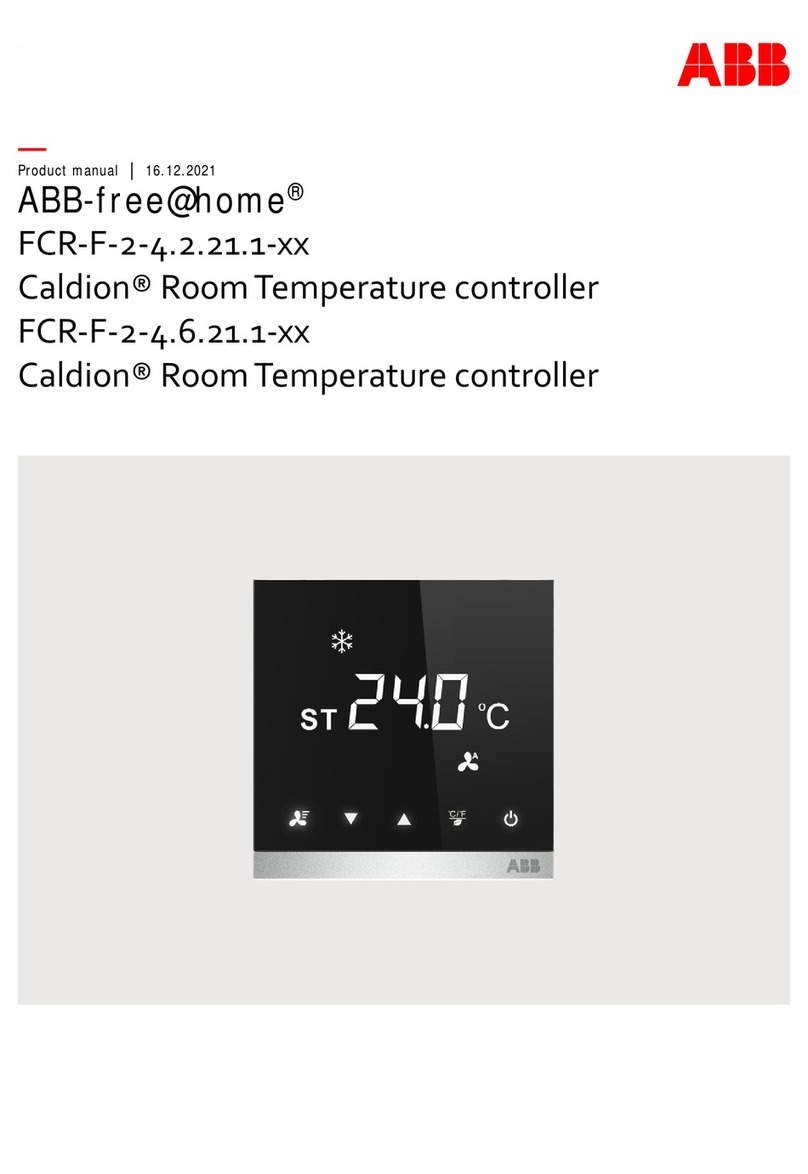emz smart Sol plus User manual

Equipment ›Excellence‹

These Assembly and Operating Instructions are an integral part of the product.
> Read Assembly and Operating Instructions carefully before using the product.
> Keep them in a safe place during the product‘s service life.
Translation from the German original edition ©emz 2012 - Subject to modications.
The contents and representations of these Assembly and Operating
Instructions are the intellectual property of emz-Hanauer GmbH & Co.KGaA.
Non-authorized disclosure, reproduction, divulgation or editing of this
documentation, as well as exploitation, utilization or publication, are prohibited.
The rights to the word and design marks ›emz - smart solutions‹ and ›smart Sol plus‹
are the exclusive property of emz-Hanauer GmbH & Co.KGaA.
The rights to any cited brands, names or logos are the property
of their appropriate developers / of the licensees in question.

3
Table of Contents
Table of contents Page
Important fundamental information 4
Symbols used 5
Description 6
Dimensions 7
Technical Data 8
Designation of the components 10
Operation of the controller 11
Display 12
Opening the terminal cover 13
Wall-mounting 14
Connection to power supply 15
Data interfaces 19
Hydraulic systems 20
Functions for boiler control 51
Thermostat functions 54
Soft water station AQA solar 55
Commissioning mode 57
Automatic mode 63
Operation mode 64
Malfunction 78
Replacement of fuse 85
Professional mode 86
Disassembly/Disposal 107
Warranty and liability 108
Error report 109
EC Declaration of conformity 111
Index 112

4
Important fundamental information
These instructions describe installation, commissioning, operation, repair
and disassembly of the differential temperature controller smart Sol plus for
solar thermal plants.
For operation of the entire plant, the technical documentation of all the
components used such as solar collectors, boiler, tank, pumps, mixers
and valves etc. must be complied with.
The controller is handled by the operator of the entire solar
thermal plant, i. e. as a rule by technical non-experts.
Make sure not to use the controller until you have thoroughly read and
understood these Assembly and Operating Instructions and the safety provisions.
Comply with all safety provisions and involve a specialist in case of doubt.
Keep these Assembly and Operating Instructions and all reference
documents so that they are available if required.
When relocating or when selling the device, hand the documents over to your successor.
Important!
The tter installing the controller must inform the plant operator about
operation, functioning and the method of action of the smart Sol plus!
Danger!
The device in operation may only be made accessible to
adults disposing of appropriate knowledge and experience!
Danger!
The controller by no means replaces the safety
components required under plant engineering aspects!
Danger!
Assembly, connection, commissioning, repair and disassembly of
the controller may only be performed by a qualied specialist!

5
Symbols used
When handling the differential temperature controller smart Sol plus
and the entire plant, please make sure that the following safety provisions
in the Assembly and Operating Instructions are complied with!
Note!
Useful information regarding handling of the device and the plant!
Important!
Important information compliance with which is essential!
Danger!
Immediate danger for assets, life and limb!

6
Description
The differential temperature controller smart Sol plusis an independent electronic
controller for surface-mounting which is used for the control of solar thermal plants.
The controller is equipped with a robust three-part plastic housing
which can only be opened by means of tools (screw driver PH2).
Operation is effected by means of only two control elements;
indications appear against a backlit colour display.
Before connection of the electrical system, the controller
must be mounted rmly to a perpendicular, robust surface (wall).
For its own supply and the supply of the outputs, the controller must be connected
to an electrical energy supply system in accordance with the technical data.
Assembly, connection, commissioning, repair and disassembly
of the controller are only admissible in a specialist workshop.
To ensure correct operation, temperature sensors type Pt 1000
must be used - the sensor design does not affect function.
Each temperature sensor has two connectors which are equivalent,
i. e. interchangeable. Thus, polarity reversal is not an issue.
The sensor lines can be extended up to a length of 100 m, to
this effect, a cable cross section of 2 x 1.5 mm2is recommended.
Note!
The electrical equipment of the device must be installed rmly and
connected to the power supply via a disconnector ensuring complete
isolation from the power supply according to the erection regulations!
Important!
Make sure that only a dry or slightly moistened cloth is used for cleaning
and servicing of the housing, the control elements and the display.
The surfaces must never get into contact with cleaning products
or solvents - mat, brittle or slightly dissolved plastic parts must
be replaced immediately!
A device with damaged housing must not be operated!

7
Dimensions
218 mm 51 mm
109 mm
dmax 5/9 mm
109 mm
140 mm
30 mm
48 mm
218 mm
5 mm

8
Technical Data
Intended Use
The differential temperature controller may be used exclusively as controller for the con-
trol of solar thermal plants. It must be operated within the scope of all the specications
described. Installation and set-up of the controller may only be performed by specialists.
The tter must have read and understood the operating manual.
The tter explains all the relevant functions to the operator.
For operation, it is essential that the housing is closed and free of damage.
Scope of supplies
1 Differential temperature controller smart Sol plus
1 Instruction manual
Differential temperature controller smart Sol plus
Type of mounting Wall-mounting
Housing Plastics, in several parts
Mode of operation Type 1
Type of protection IP 20
Dimensions Width x Height x Depth [mm] 218 x 218 x 51
Weight [g] Basic version 725
Storage/operating temperature [°C] 0-40, non-condensation
Handling via rotary encoder and pushbuttons
Display TFT colour display 70 x 53 mm, backlit
Connection to power supply
Design 3 spring-type terminals PE, N and L
Service voltage [VAC] 85-265
Line frequency [Hz] 50 ±1%
Auxiliary consumption typ. [W] 1.25
Power consumption max. [W] 3.1
Fuse Micro fuse, type 5 x 20 mm, T4A/250 V
Rated pulse voltage [V] 2500
Max. cross sections to be connected
Cable end sleeve: 0.25 to 0.75 mm2
Single-wire 0.50 to 1.50 mm2
Fine-wired 0.75 to 1.50 mm2

9
Technical Data
Interfaces TS1 - TS8
Design 2 spring-type terminals each
Assignment as inputs
Admissible temperature probe Temperature sensor Pt 1000
Optional assignment of
TS6-TS8 to the impeller sensor DFZ 1-100 pulses/litre
Optional assignment as PWM signal 100Hz...2kHz or
output on TS7/TS8 analogue output 0...10V, max. 10mA
Interfaces TS9 - TS10
Design 2 spring-type terminals each
Assignment to the impeller sensor DFZ 1-100 pulses/litre
Assignment as output PWM signal 100Hz...2kHz or
analogue output 0...10V, max. 10mA
Active outputs RO1-RO4 :Triac outputs
Design 3 spring-type terminals each, PE, N and L
Output voltage [VAC] 85-265
Output power max. per output [VA] 200
Output current max. per output [A] 1
Switching output REL: Floating change-over contact
Design 3 spring-type terminals
Switching voltage max. [V] 253
Switching capacity max. [VA] 230
Switching current max. [A] 1
Interface for analogue Vortex ow sensors
Design 1 multi-pin connector
5V/24V supply terminals
Design 1 spring-type terminal each
Output voltage [VDC] 5V/24V
Max. current per output [mA] 15
Supply terminals L
Design 1 spring-type terminal each
Output voltage [VAC] 85-265
The total current of all outputs including RO1-RO4 must not exceed 4A!

10
Designation of the components
Housing
base
Drillhole for
securing bolt
Vortex
plug connector
esc button
Display
Rotary encoder
with OK button
Housing cover
Screw fastening of terminal cover
Break-out
segments
Screw connection
strain relief device
Strain
relief device
Terminal cover
Terminals
Fuse
Spare fuse

11
Operation of the controller
The entire set-up and operation of the differential temperature controller
smart Sol plus is effected via only two control elements on the device front.
All settings and interrogations are effected via the rotary encoder.
To nd a required menu item, turn the rotary encoder to ›scroll‹
through the menu - the selectable option appears on a coloured
background on the display.
To conrm the selected menu item, press the rotary encoder.
An appropriate submenu is called up, or selection is activated.
Press the esc button to make the menu return by one level from any subitem.
If no input is made within the preset time (30-255 s),
the controller returns automatically to the initial level.

12
Activation
Start
t ON
T ON
t solar 1
n solar 1
t solar 2
10min
20.0°C
20s
100%
0s
1.3.2 Tube collector
25.08.2012 10:35
System 11
25.08.2012 10:35
Display elements; example: information screen
Display
For indication of the operating mode and for communication in case of set-up, malfunc-
tion, modication and evaluation, the differential temperature controller smart Sol plus
is equipped with a coloured full graphics display which is permanently backlit.
The display is active as long as there is supply voltage on the controller.
After a preset time (30 - 255 s), backlighting is dimmed to 10%.
Active system
with current
temperatures
Display elements; example: communication screen
Activatable
menu item
Selection menu
Scroll arrow
Check box
Sub menu arrow
Date and time
Professional mode
Manual mode
Message
Number and name of menu
Date and time

13
Danger!
Mortal danger due to electrocution! Whenever work is performed on the
open terminal cover, all poles of the power supply must be
disconnected reliably and protected against being switched on again!
Opening the terminal cover
1Release the lock screw.
2Pull apart the sidewalls
of the terminal cover
at the lower third...
3...swivel the terminal
cover forward ...
4... push it upwards ...
5... and remove it.
Store the terminal cover
carefully and protect
it against damage!
To close the terminal cover,
reverse the opening procedure.

14
Wall-mounting
1Fasten the top securing bolt so
that a space of 2 to 3 mm is
created between the wall and
the screw head.
2Move the device so that the
upper fastening port is located
above the screw head ...
3... and push it downwards.
4Fasten the lower securing bolt.
If necessary, use dowel
pins for wall-mounting!
Important!
The device corresponds to protection type IP 20 - make sure the
appropriate prerequisites exist on the envisaged place of installation.
Do not use the housing base as drill template.
A device with damaged housing must not be operated!

15
Connection to power supply
The differential temperature controller smart Sol plus is connected to the
power supply via three groups of spring-type terminals which are
visible once the terminal cover is opened.
To introduce the cables, release the screws on the strain relief device;
if necessary, remove the strain relief device.
In case of ush mounting of the cables, the break-out segments in the housing
base can be removed carefully and the cables routed through these ports.
The central terminal block is the interface to a potential-free change-over contact.
The spring-type terminals for the Power, RO1 to RO4 and REL, and for TS1 to TS10
can accommodate solid wires up to a cross section of 1.5 mm2.
Appropriate stranded wires must be preassembled with cable end sleeves.
For the strain relief device function, TS1 to TS10 and REL require
cable cross sections of at least 5mm, for Power, RO1 to RO4 at least 7mm.
Danger!
Mortal danger due to electrocution! Whenever work is performed
on the open terminal cover, all poles of the power supply must be
disconnected reliably and protected against being switched on again!
Terminal block
RO1-RO4/Power
Terminal
block REL
Terminal block
TS1-TS10

16
Connection to power supply
Connection of a pump to REL
Connection diagram for a pump to REL:
Connection of a switching valve to RO1-RO4
Connection diagram for a switching Connection diagram for a switching
valve without power supply to RO4: valve with power supply to RO4:
Connection of a switching valve to REL
Connection diagram for a switching Connection diagram for a switching
valve without power supply to REL: valve with power supply to REL:
Valve
L
N
PE
Valve
L‘
N
L
Valve
L
L‘
N
Valve
L‘
N
PE
Pump
L‘
N
PE

17
Connection to power supply
High-efciency pump:
A high-efciency pump can be connected via RO1 to RO4.
The appropriate control signal is issued at TS7 to TS10.
Thus, TS7 to TS10 is no longer available as input.
The control signal may be an analog voltage 0 - 10V or a PWM signal.
For further details, please refer to the pump specication.
For denition and settings, the professional mode under 1.2.9 has been provided.
RO1 to RO4:
230V supply of the
high-efciency pump
TS7-TS10: PWM-control signal
for the high-efciency pump
Left-hand terminal GND
Right-hand termin.: Signal
Volumetric ow sensor:
Measurement of solar radiation (heat quantity):
The solar yield is calculated from the ow rate and the differential temperature.
The differential temperature is the difference in the temperature of the collector
sensor and the solar circuit return line sensor. There are various technical options:
a) Use of a vortex volumetric ow sensor with 2 analog signals for ow rate and
temperature. The vortex sensor can be inserted directly at the plug connector provided
behind the TS terminals. All plant layouts (systems) permit solar radiation.
Pin assignment
b) Impeller sensor (incrementation input)
An impeller sensor can be connected to TS6 to TS8 and must be adjusted during
installation. The temperature sensor for the solar return line must be set
in the menu ›1.1.4 Heat quantities‹.
Solar yield measurement with impeller sensors is possible for all systems.

18
Connection to power supply
For connection, press the actuation pushbutton
of the spring-type terminal using a screwdriver and
insert the wire to its stop in the appropriate port.
Release the actuation pushbutton and
pull the cable slightly to ensure that it
is safely clamped.
Important!
Before closing the terminal cover, make
sure the strain relief device is tightened safely.
Check once more that all cables are in good
condition and connected correctly.
The strain relief device can only ensure solid
clamping if the cables are not stripped to a length
of over 35 mm.
Insulation of the individual wires must be
removed over a length of 9 - 10 mm to ensure
safe electric contact in the spring-type terminal.
Stranded wires must be provided with cable end sleeves!
9-10 mm
max.
35 mm

19
Data interfaces
The solar controller has the following data interfaces:
The cut-outs at the left of the housing base accommodate a
USB port as well as a slot for a storage medium (SD card).
These interfaces are used, for example, for reading of er-
ror messages or log data or loading of software updates.
The USB port provides access to the SD card.
Only SD cards approved by emz must be used.
The controller automatically detects the SD card.
Prior to removing the SD card
›Rem.SD card safely‹ must be
selected in ›1.2 Settings‹,
otherwise data loss may occur.

20
Hydraulic systems
Boiler with disable
recharge feature,
efciency optimization
Boiler with disable
recharge feature
time-/temperature-
controlled, in combination
Boiler, e. g. using fossil
fuels/ solid fuels/
heat pump etc.
Hydraulic
heat exchanger
Temperature probe
Switching valve
Solar collector panel
Secondary yield
Solar collector panel
Main yield
Swimming pool
Warmwasserspeicher/
Pufferspeicher mit
Wärmetauschern
Warm water /
buffer tank without
heat exchanger
Heating pump
Return line
Supply line
Note!
Dene structure and design of the plant already when planning
the entire solar thermal system and align the design with the
one of the hydraulic systems of the controller!
If you want to complete an existing system or replace
the existing controller, please make sure that
smart Sol plus is compatible with the existing conguration!
The sensors are connected to TS1 to TS10, the order not being
signicant; pumps and valves are connected to RO1 to RO4 / REL - The
interfaces are assigned to the functions in question on commissioning.
Table of contents
Other emz Temperature Controllers manuals
Popular Temperature Controllers manuals by other brands
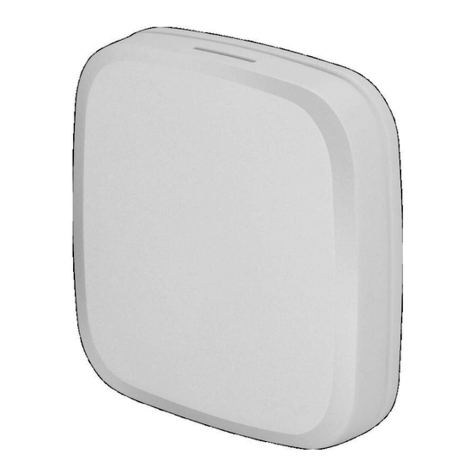
STIEBEL ELTRON
STIEBEL ELTRON EASYTRON Connect ERT instructions

Honeywell
Honeywell ASC02-01WM Installation and operating instructions
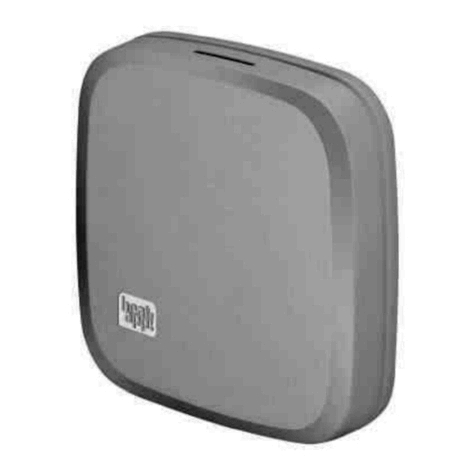
heatapp!
heatapp! sense-wire Installation instruction
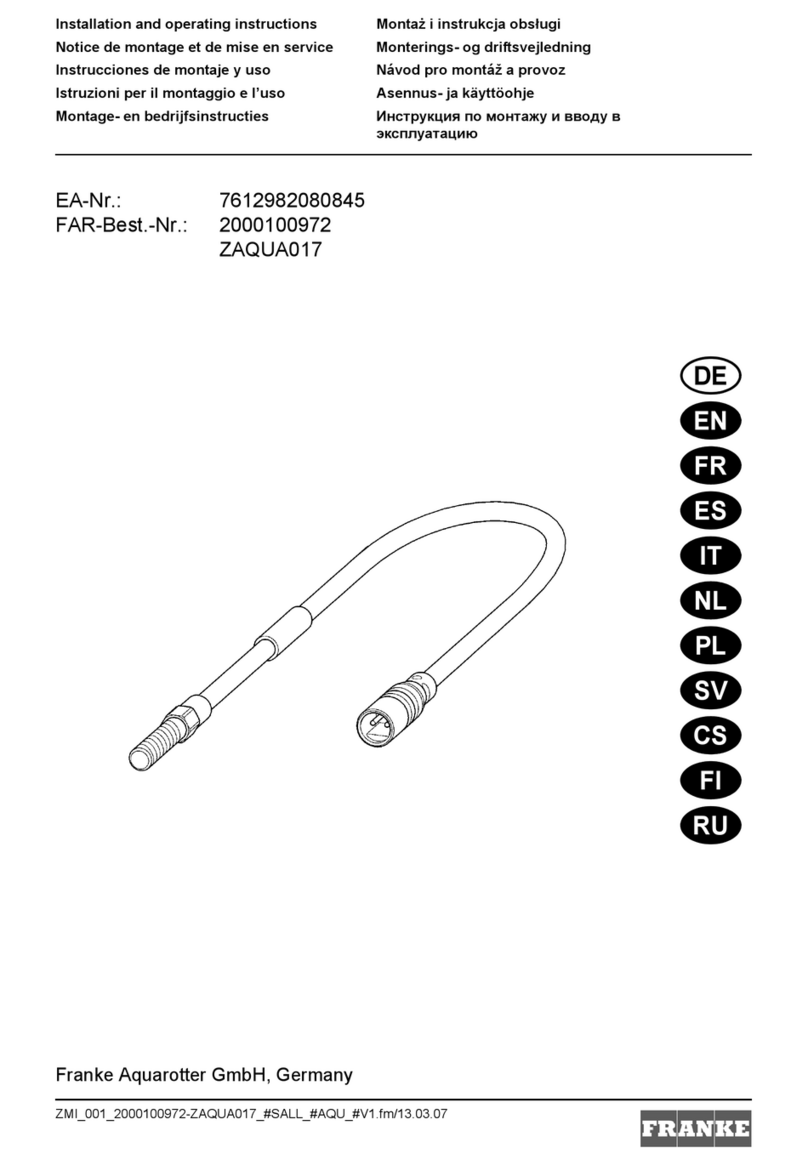
Franke
Franke ZAQUA017 Installation and operating instructions
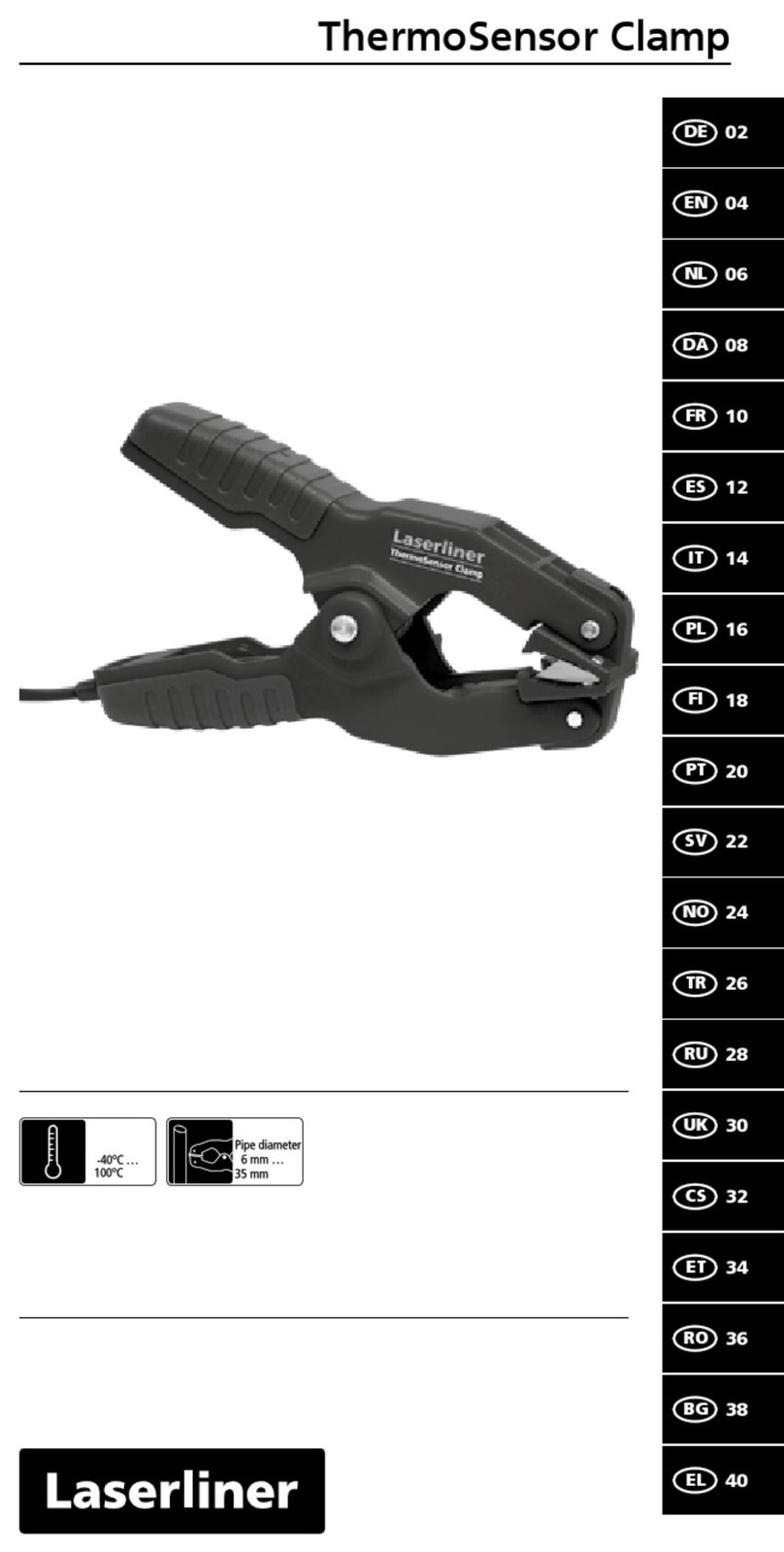
LaserLiner
LaserLiner ThermoSensor Clamp operating instructions
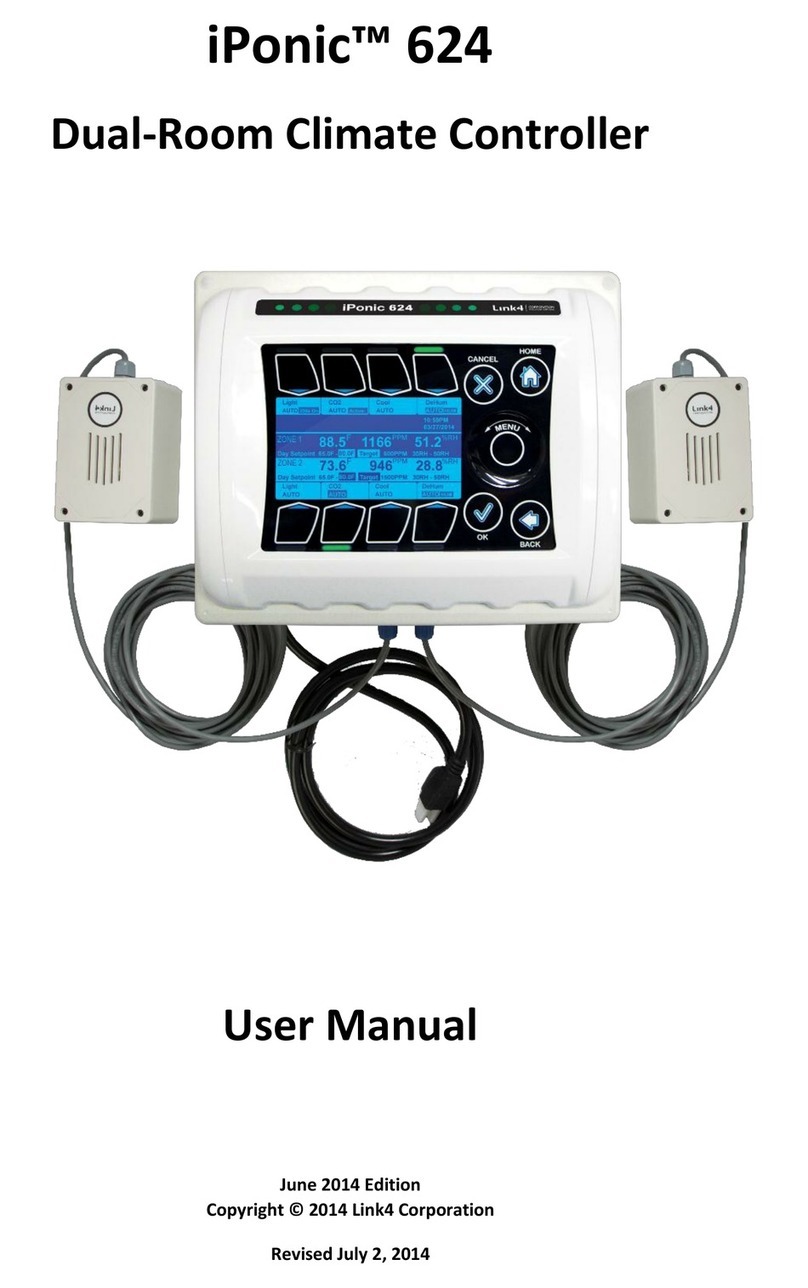
Link4
Link4 iPonic 624 user manual
